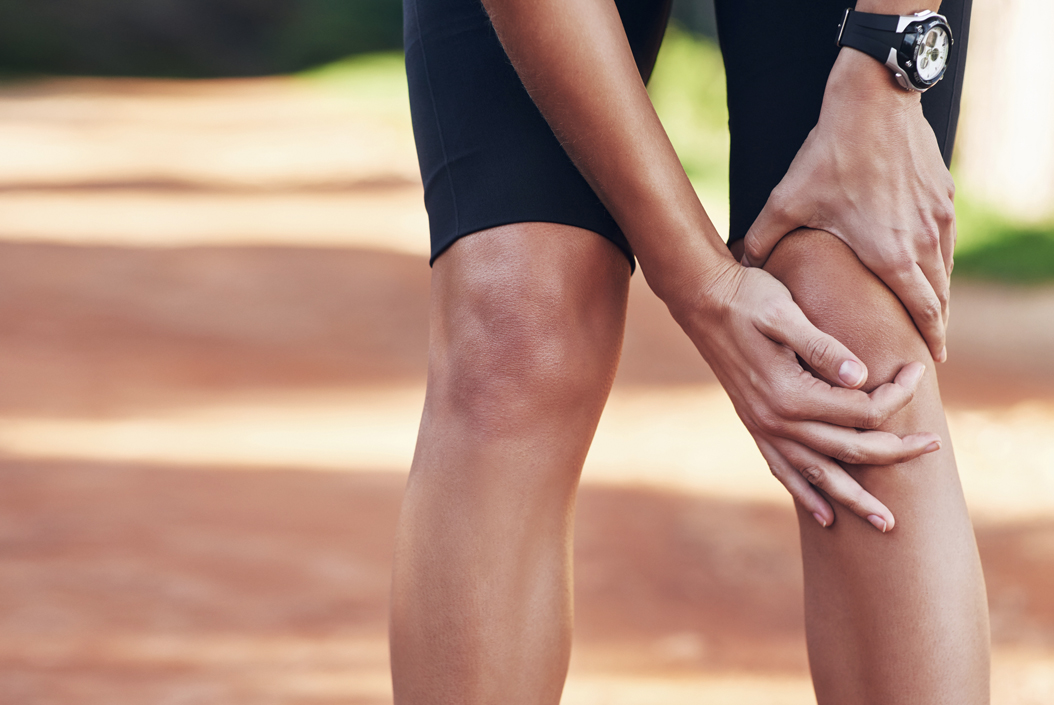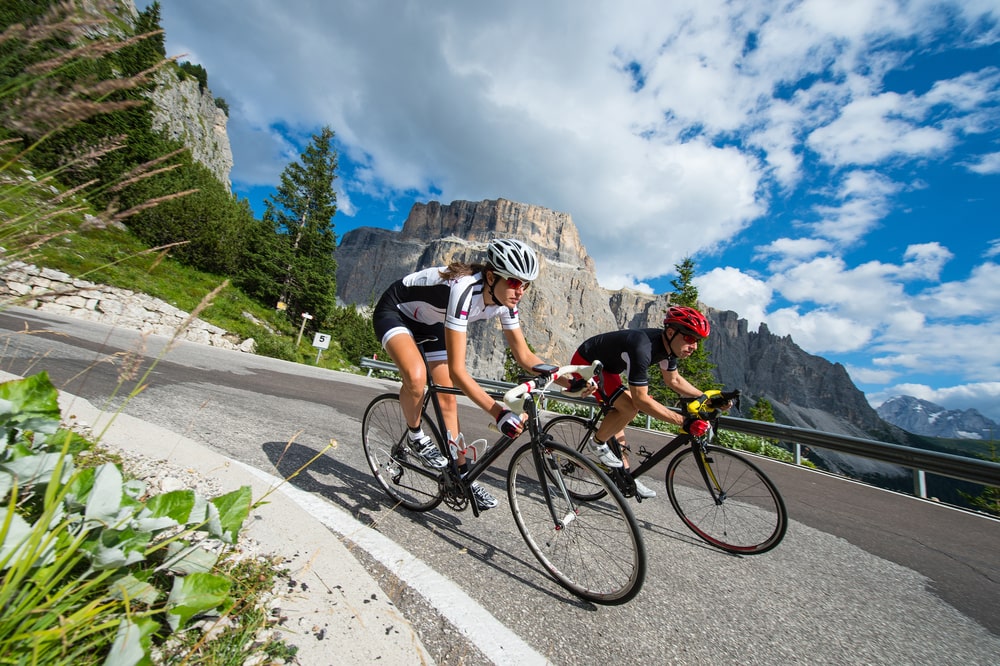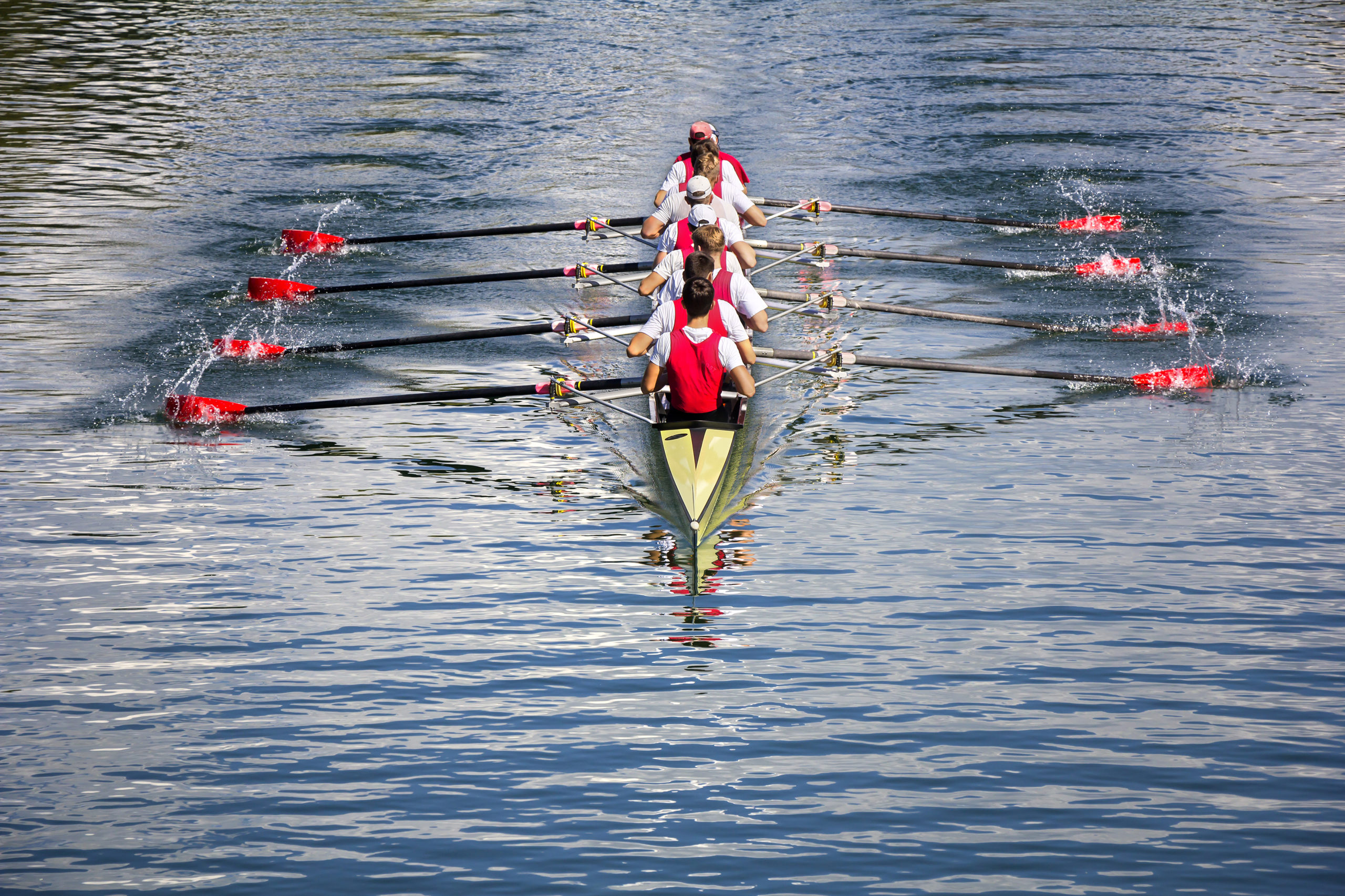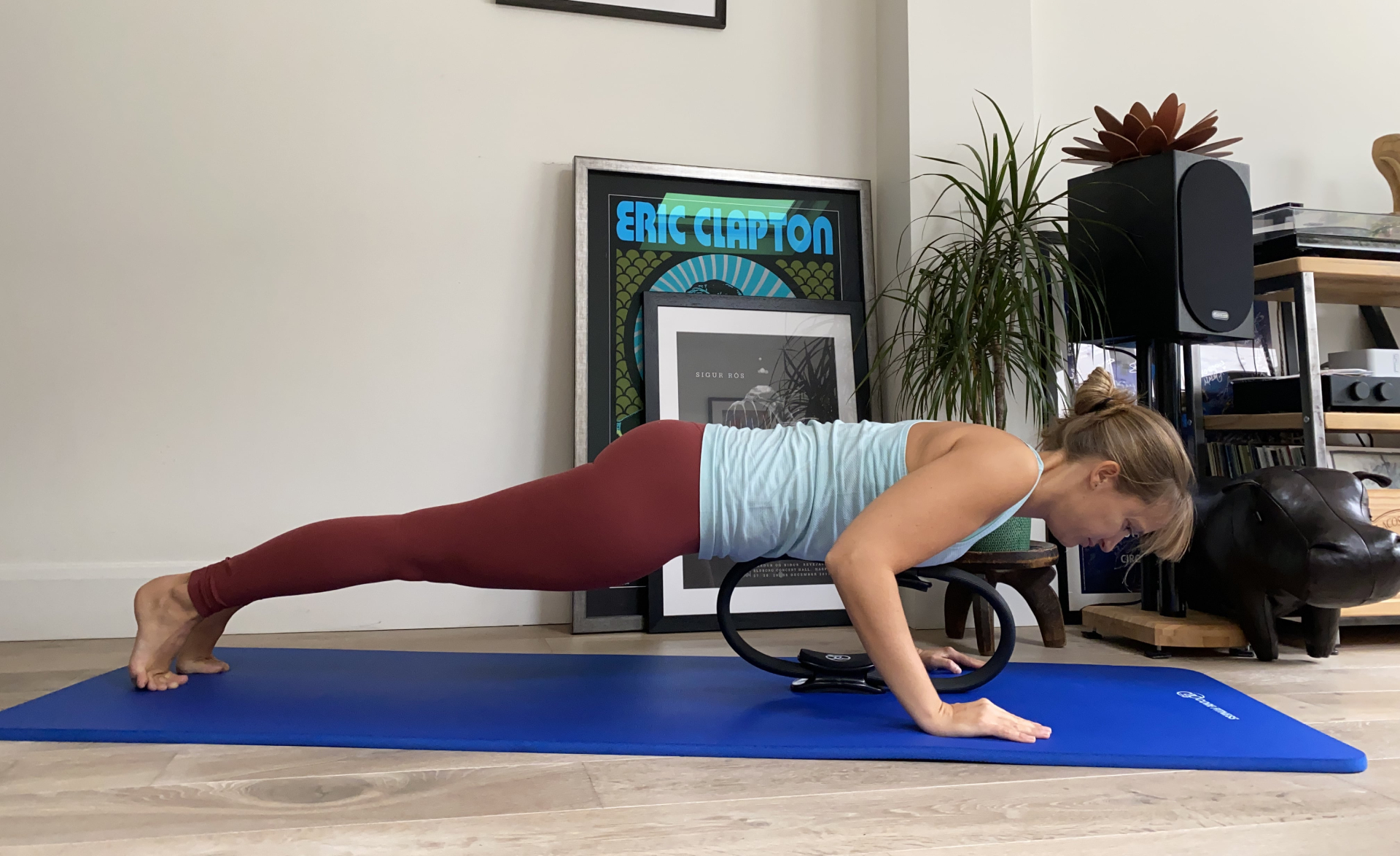Knee injuries are among the most frequently seen orthopaedic injuries. They are common in sports that involve sudden stops, jumps or changes in direction, such as football, rugby and skiing.
Common knee injuries include ligament sprains and tears, as well as patellar (kneecap) dislocations. These can result in pain, poor function and instability of the joint.
Treatment depends on the severity of the injury and involves bracing, Physiotherapy and sometimes surgery. Increasingly, clinical Pilates is also being used for rehabilitation and is proving to be effective both pre- and post- knee surgery.
To find out more about how clinical Pilates can help heal and prevent knee injuries, we spoke to Consultant Knee Surgeon Martin Goddard. Here Martin talks about knee injuries, knee surgery and the recovery process.
Common knee injuries
The knee is a complex joint that is made up of bone, ligaments, menisci (shock absorbers) and tendons.
Its design makes it vulnerable to injuries – the most common of these include ligament sprains and tears and meniscal injuries.
Anterior Cruciate Ligament (ACL) Injuries
The two cruciate ligaments are in the centre of the knee and cross over each other, hence the name cruciate. The ACL or anterior cruciate ligament is the ligament at the front of the knee.
This ligament is most commonly injured during sports. Changing direction suddenly or landing from a jump incorrectly can tear the ACL. It is a serious injury, and patients are unlikely to be able to return to team ball sports without surgery to reconstruct it.
Several studies have shown that female athletes, because of differences in things like pelvis and leg alignment, are more likely to suffer ACL injuries.
Posterior Cruciate Ligament (PCL) Injuries
The posterior cruciate ligament is situated at the back of the knee.
This is often injured from a blow to the front of the knee while the knee is bent. It usually happens as a result of car crashes (dashboard injury) and sports-related impacts. It is much rarer than ACL injury and often does not require surgery.
Collateral Ligament Injuries
The collateral ligaments are located either side of the knee joint.
They limit how much your knee can move from side to side. Injuries to the collateral ligaments are usually caused by a force that pushes the knee sideways. A sprain to the medial collateral ligament (MCL) is the most common knee ligament injury.
You can sprain or tear your MCL if your lower leg gets forced outwards from a direct impact to the side of the knee. This may happen when you are skiing.
Less frequent are injuries to the lateral collateral ligament (LCL). These can be caused by blows to the inside of the knee that push the knee outwards.
Meniscal injuries
The meniscus is the piece of cartilage between the joint that performs the role of shock absorber at the knee joint. It also has other roles such as adding to joint stability.
You can damage a meniscus if you play a sport that involves twisting, such as football or basketball.
Your menisci can also start to wear as you age. In older people, this makes them more likely to tear during day-to-day activities. This is common and is part of the normal ageing process of the knee.
Tendon inflammation and tears
The tendons in the knee, together with the knee muscles in the front of the thigh, help to straighten the leg.
Inflammation to the patellar tendon is most common among people who play running or jumping sports. It can also be exacerbated by training that involves squats and is associated with over-training or poor training technique.
Fractures and dislocations
Other less common injuries to the knee involve fractures of the patellar (kneecap) caused by falls landing directly on the front of the knee, and patellar dislocations when the patellar moves out of joint.

How can clinical Pilates heal and prevent knee injuries?
1. Clinical Pilates teachers have specialist training
Clinical instructors teach a type of Pilates that has been adapted to make it appropriate for people with medical conditions and for people pre- and post-surgery. Clinical courses are also rigorous and usually take several years to complete – that’s why this type of Pilates safe for people with knee injuries.
Clinical Pilates – like the kind Complete Pilates offer – has other benefits for those with knee problems. As knee surgeon Martin Goddard sees it, the Complete Team’s clinical and technical expertise means that they have “the ability to diagnose, assess and manage musculoskeletal problems, [something] your average Pilates instructor is not trained to do it.”
As Goddard puts it, Complete use “Pilates as a tool for recovery.”
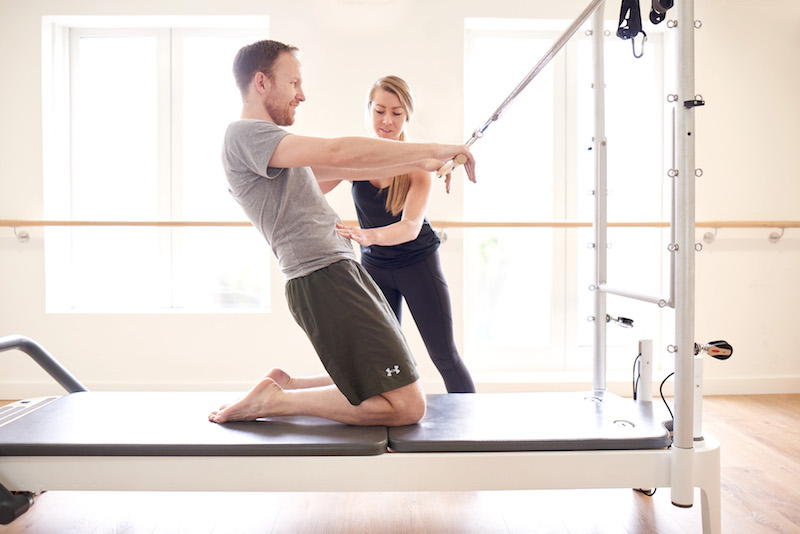
2. Clinical Pilates considers the whole body
Clinical Pilates is a holistic approach to healing. This means that an instructor will consider the whole body when treating an injury, not just the site of pain.
With knee injuries, a clinical Pilates instructor will look at knee function and how the knee works in relation to the hip, ankle, as well as the rest of the body.
According to Goddard, this approach is essential for knee rehabilitation after surgery.
“When a patient has had ACL reconstruction surgery, the surgery is probably 70% of their journey back to full sport. All I do is make their knee stable by giving them a new ACL for the one they damaged.”
“The other 30% is the rehabilitation, to get their whole leg and whole body working again better. To prevent another injury in the future, it’s really important that the whole limb is strong and in good condition with quick reflexes,” he says.
3. Clinical Pilates uses the support of the equipment
Part of what makes clinical Pilates so effective for recovery after a knee injury is that it is mostly conducted on the full studio equipment.
The equipment is very supportive. It allows injured people to practise their exercises, learn efficient movement and muscle activation, without aggravating their condition.
As Goddard says: “One of the key benefits of Pilates exercises [with the equipment] is that they are non-weight bearing. [People with injuries] might not be able to do these exercises in a gym setting, but they can do them with the reformer because it is going to take the muscle weight away.”
As the injured person gains better control and strength, exercises can then be progressed to full weight bearing. This can be done by changing the spring tension on the equipment.
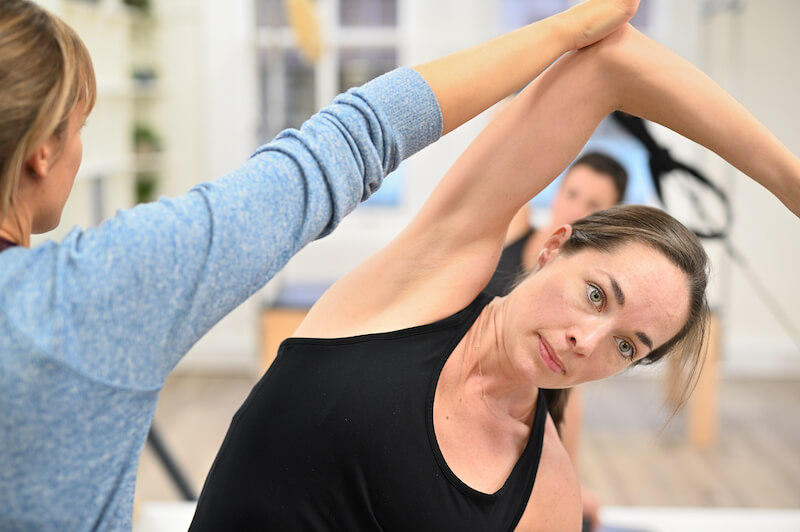
4. Clinical Pilates helps with injury prevention
Using Pilates movements, an instructor is able to assess function at the knee joint, leg alignment and strength.
This is helpful for injury prevention because any faulty movement patterns or muscle imbalances that might create problems in the future can be identified and corrected.
Pilates can also help with leg neuromuscular proprioceptive training, something Goddard points out “is hugely important when it comes to protecting your knee against further injury. Research also shows that it forms an important part of recovering from ACL surgery and returning to sport.”
Goddard explains that “the objective of neuromuscular training is to improve the ability to generate a fast and optimal muscle firing pattern, to increase dynamic joint stability, and to relearn movement patterns and skills necessary during activities of daily living and sports.”
He adds: “this means that when you are jumping, for example, you are light and have good landing technique. What we want, when you are playing sport, is for your muscle to be quick at firing when you land, such as on a single leg from a jump. This means the muscle takes all the force before the ligament has even had force through it – this is what prevents injuries.”
Many exercises in the Pilates repertoire, like jumping on the reformer, help build neuromuscular control in the lower body. These exercises also teach proper foot articulation, which can lessen the impact on knees for athletes who play high-impact sports that involve jumping.
All of this means that regular clinical Pilates sessions, alongside a targeted strength training programme, can help keep your knees – particularly your knee ligaments – healthy.
Goddard agrees: “when it comes to protecting your knee ligaments, rehabilitation and good strengthening and condition help prevent injuries. 100%.”
Martin Goddard works at the Fortius Clinic and is available for all knee injuries.
Are you struggling with a knee injury and want to see how we can help?
Education is key:
These blogs are designed to give information to everyone, however, it is important to remember that everyone is different! If you have not seen one of our therapists and have any questions about injuries, what you have read or whether this may be useful to you, please just ask. We are more than happy to help anyone and point you in the right direction. Our biggest belief is that education is key. The more you understand about your injury, illness and movement, the more you are likely to improve.


